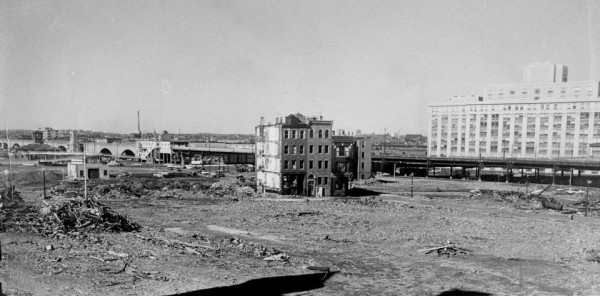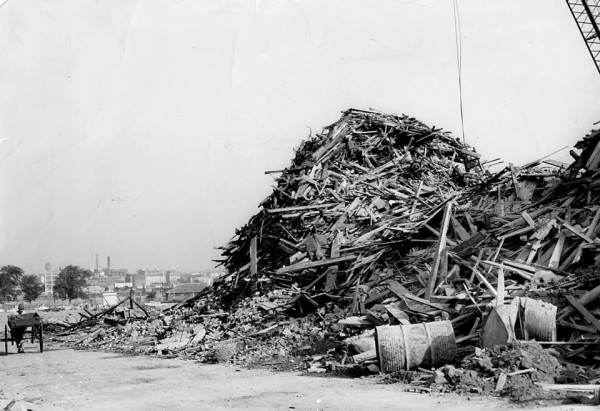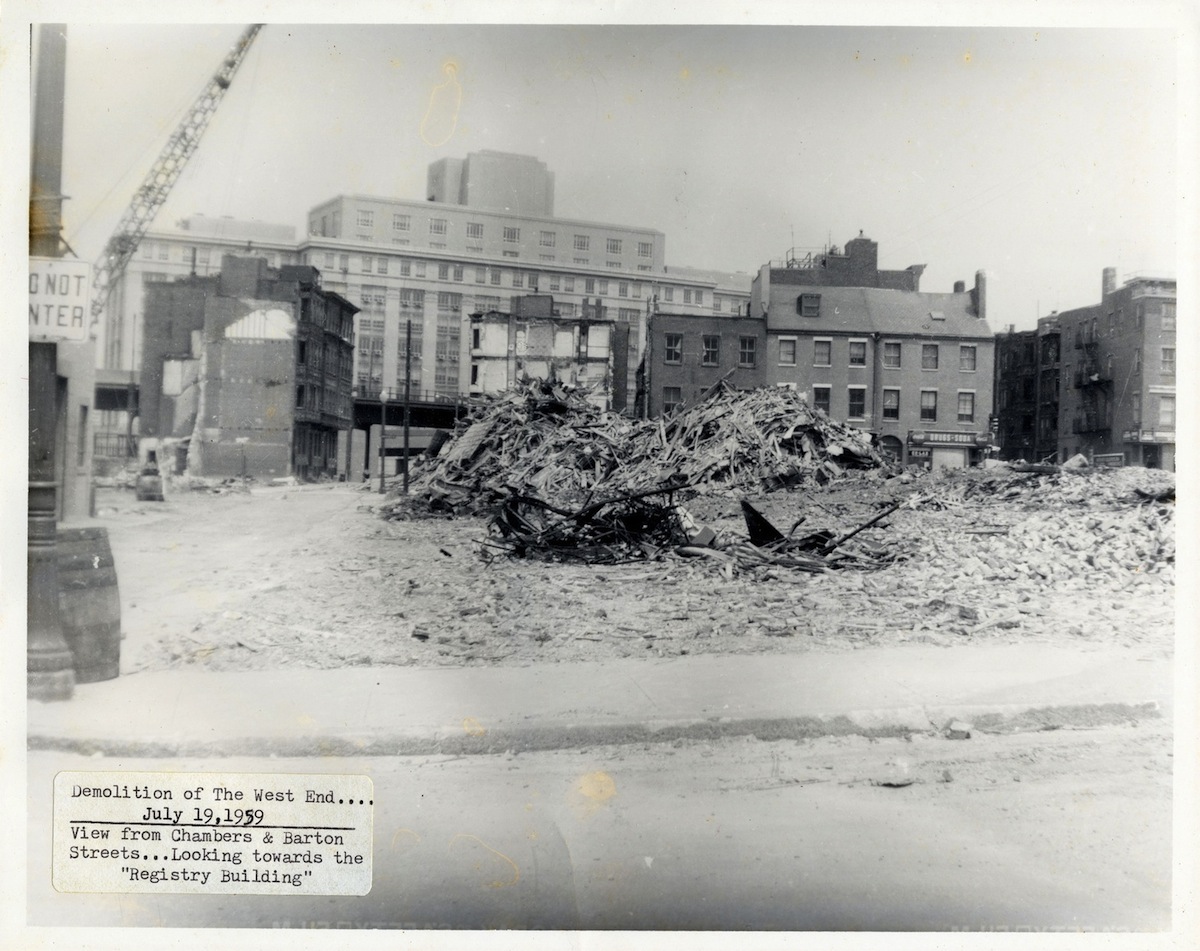Chambers and Barton Streets, July 19, 1959 (via).
West End
Missing the West End

Architecture critic Robert Campbell has a nice essay in today’s Boston Globe asking “What makes the memory of this neighborhood so durable? Why do the people, half a century later, still feel that they are members of it?” Of course, the demolition of the West End figures prominently in my novel The Strangler. (Photos: Boston Globe.)

(Images: Boston’s old West End under demolition, ca. 1958-60.)
West End Memories (continued)
Reader “Leonard in Florida” writes with another memory triggered by reading The Strangler:
My father played the numbers with a guy by the name of Brownie in the West End for years. He naturally had a formula for figuring the number. One night he came home with a paper bag with $4,000. He had hit a four-number hit, which I believe paid about $30 to the penny, whereas a three-number hit paid $30 to a nickel.
$4,000 in 1950 would be about $36,000 today, according to the inflation calculator. Not bad. (Leonard’s first contribution is here.)
West End Memories
A reader, Leonard in Florida, emails a memory of Boston’s old West End, which figures so prominently in The Strangler.
When I was a kid in the 1940’s, my grandfather and father had an egg store at 203 Chambers Street in the West End. It was a landing spot for refugees. There were all types of people, and religions. I remember a Syrian-owned store where the owner spoke in Yiddish to my dad as they didn’t want the customers to know what they were saying. I also remember when my father used to deliver eggs to Charlie S___’s family store in the South End and they were booking numbers and cashing checks as a business in their store.
More West End memories here.
